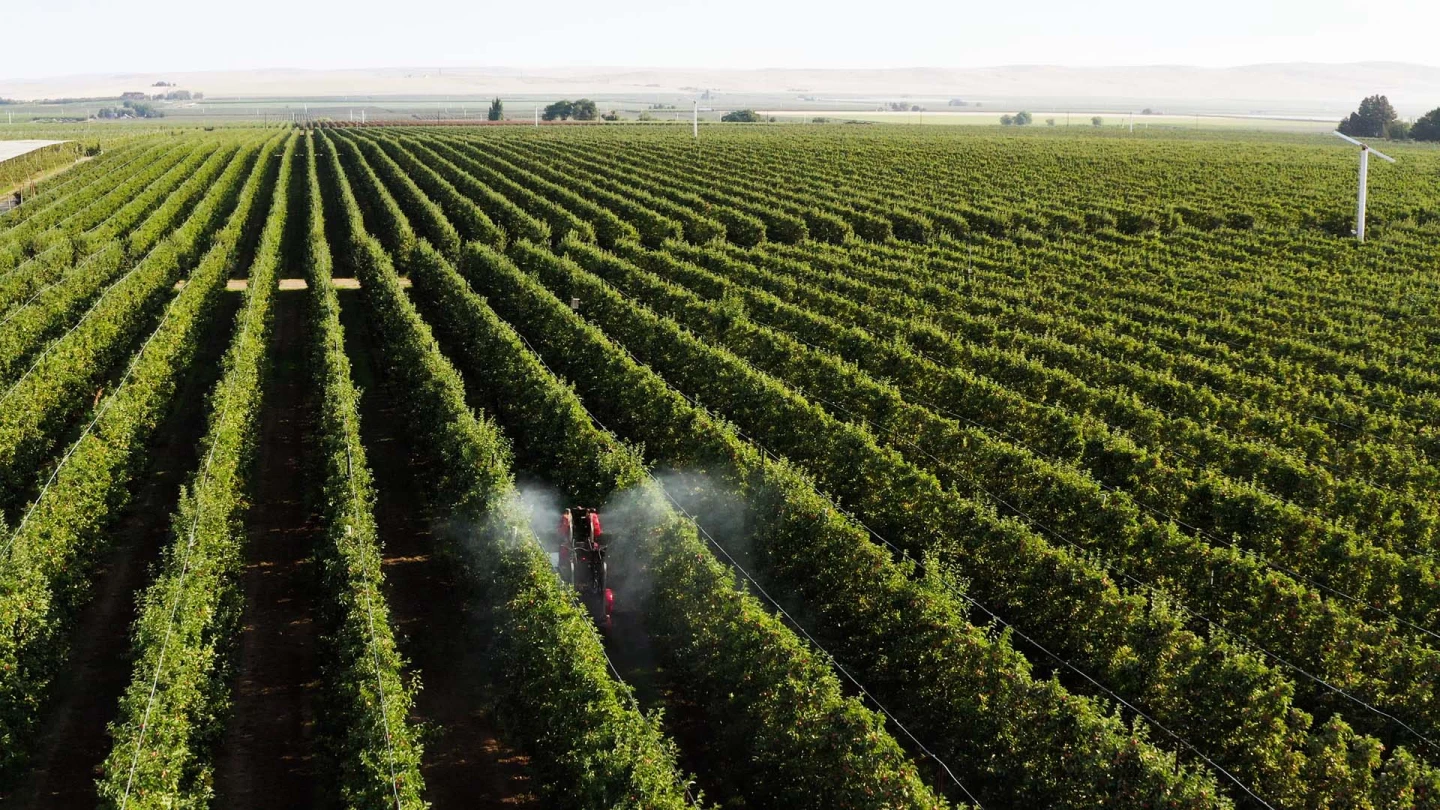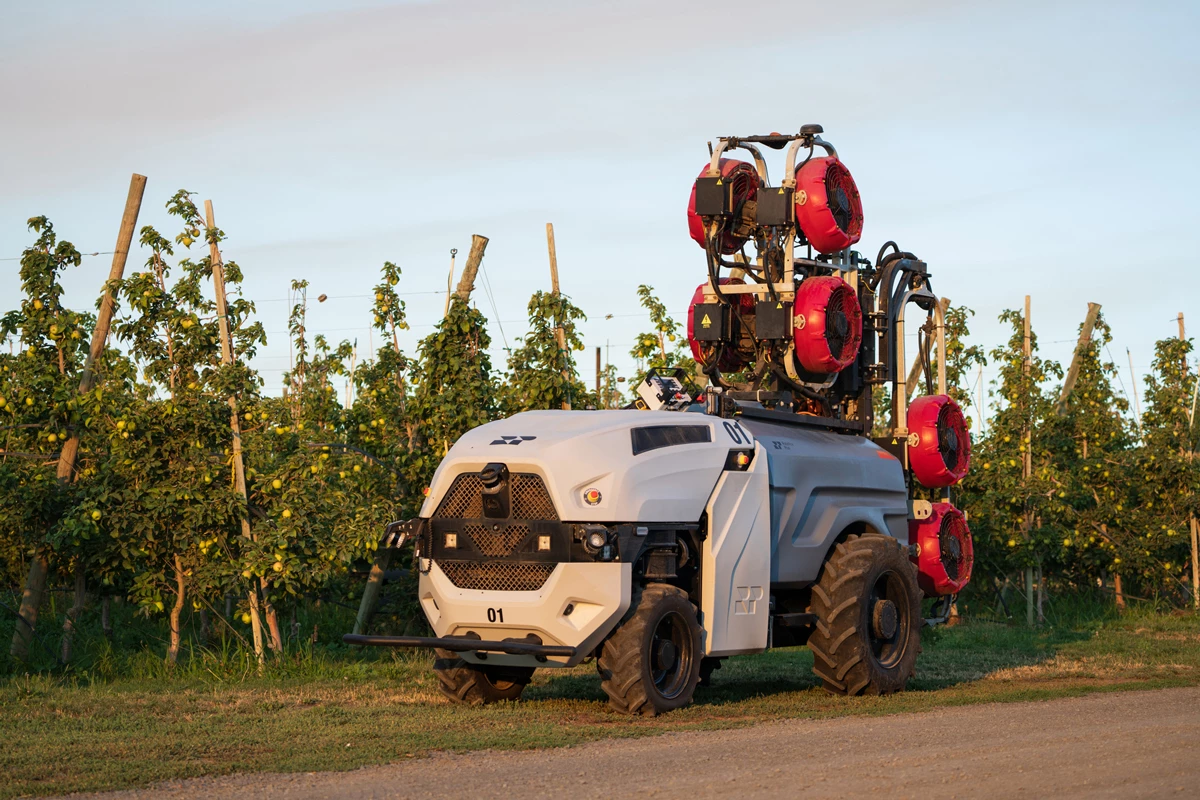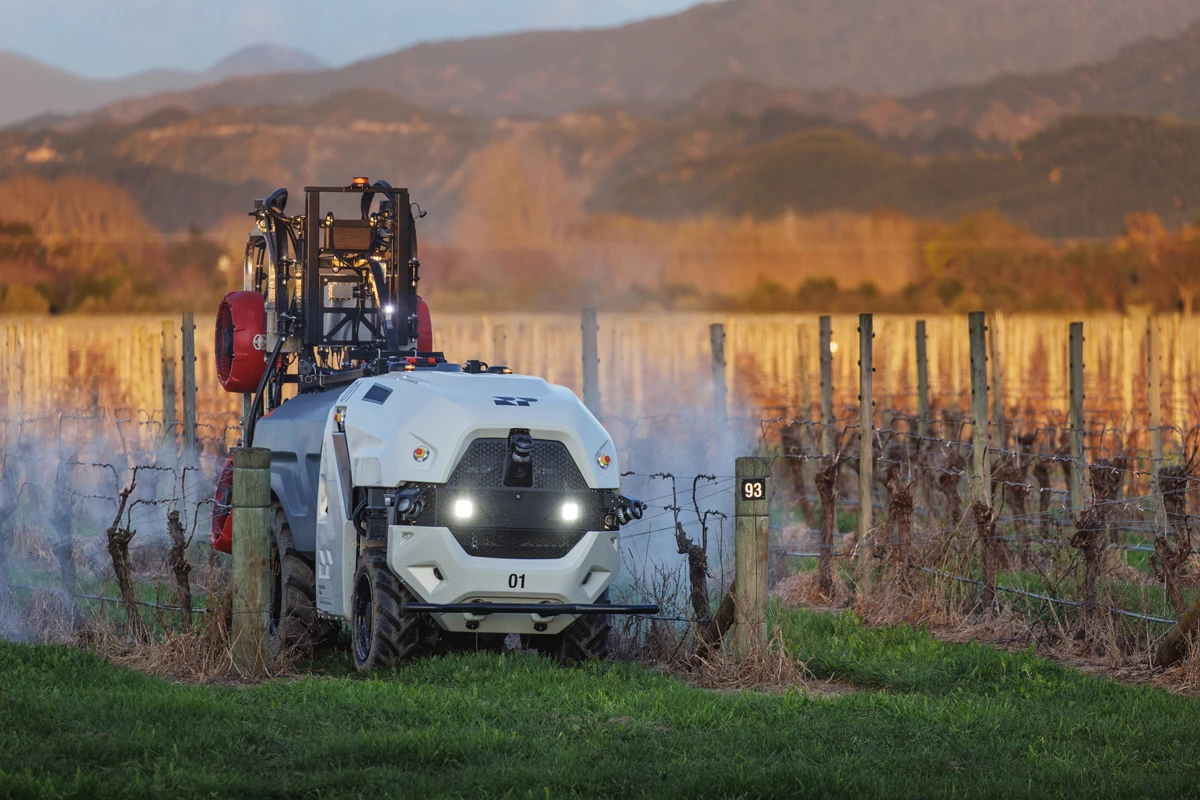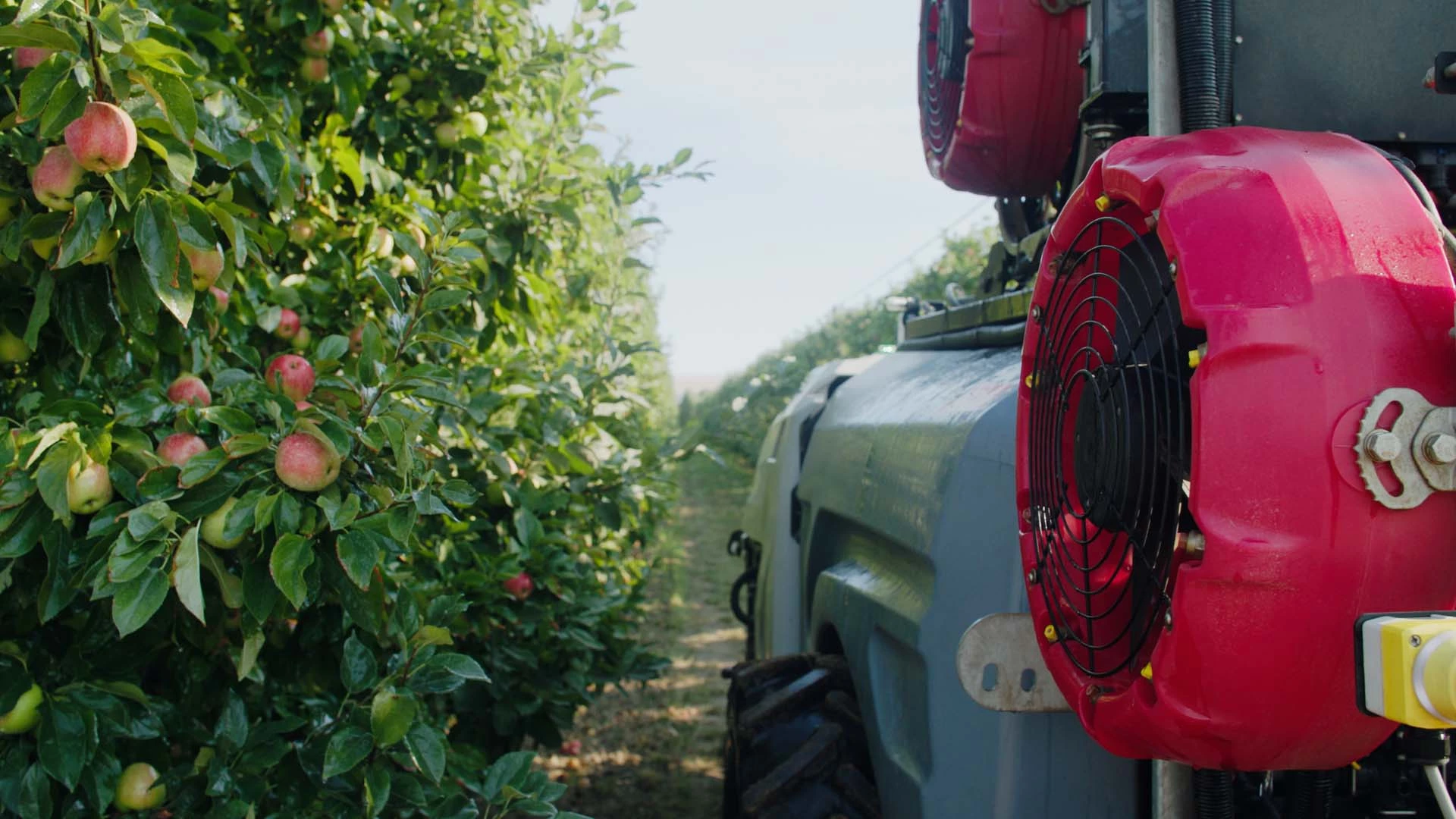The spraying of orchards and vineyards certainly isn't an eco-friendly process, with tractors spewing exhaust as they douse crops in herbicides and pesticides. That's one of the main reasons the electric, autonomous Prospr robot was created.
Manufactured by New Zealand agritech company Robotics Plus, the all-wheel-drive robotic vehicle was unveiled last September at the FIRA agricultural robotics show in California. It's now in commercial use in New Zealand, Australia and the US.
Among other features, the robot sports a refillable spray tank, multiple spray fans, a diesel generator, a battery pack, and four knobby-tired wheels which are each independently driven by their own electric motor.
For relatively short spray jobs, Prospr can operate on battery power alone. The generator kicks in for longer jobs, producing electricity that reportedly allows the bot to work all day long without recharging or refueling. As a result, Prospr is claimed to use up to 72% less fuel than a traditional diesel tractor performing the same task.

Guided by GPS, the robot makes its way up and down rows of vines or trees, spraying the crops along either side of itself as it goes. It utilizes a combination of LiDAR sensors and cameras to detect and identify any obstacles in its path, slowing down or stopping as necessary.
Prospr additionally has a pressure-sensitive front bumper, which triggers the bot to stop if it encounters significant resistance. If all else fails, there's also an on-vehicle emergency stop button.
At the end of each row, a patented steering mechanism allows the robot to swivel on its rear axle, thus reducing its turning radius so it can go straight down the next row.

Users can swap in different numbers and types of spray fans as needed, plus they can program the robot to apply different amounts of herbicide or pesticide in different areas of the orchard/vineyard, in order to minimize the amount of chemicals used. They can also monitor the progress of multiple Prosprs via a control panel on their laptop or tablet, even taking manual remote control if necessary.
If you want to see the robot for yourself, it's making a return visit to the FIRA show this week in Sacramento. Its capabilities are demonstrated in the following video.
And no, Prospr isn't the only vineyard- or orchard-tending bot in existence. While a number of such devices are currently in development, the Slovenian-designed Slopehelper and the hulking Herbicide GUSS are both already commercially available.
Source: Robotics Plus





